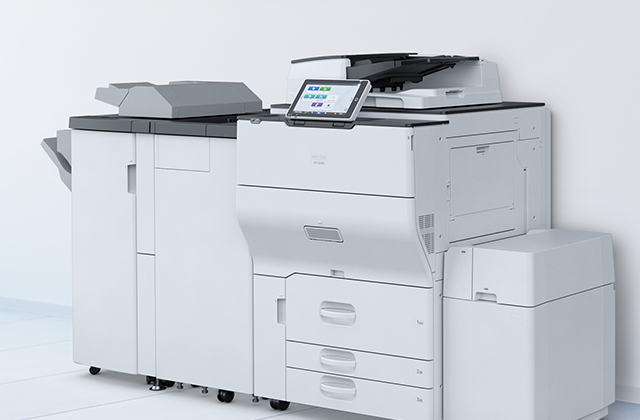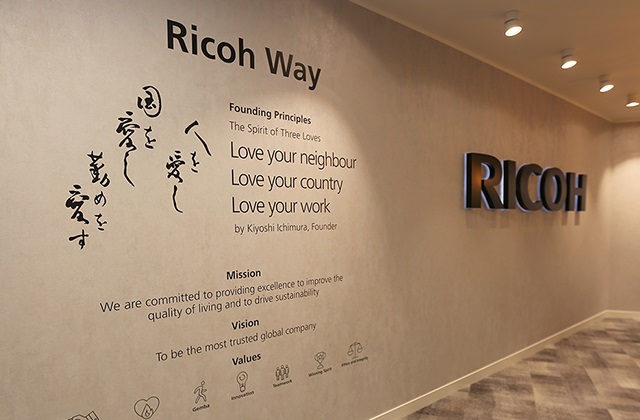What the FT sale means for print and digital media in the West
By Benoit Chatelard, Vice President, Production Printing, Ricoh Europe
Ricoh Europe, London, 16 September 2015 – The £844m sale of the FT Group to Japanese business publisher Nikkei is very much a ‘sign of the times’.
For a long time now, print and digital have locked horns in the world of media – both fighting for relevance with their audience, and both struggling to meet advertising expectations, albeit at opposite ends of a curve.
And now one of the most recognised media brands in the world, famous for its high quality pink print product, has been snapped up by a company renowned for its effective adoption of digital in the East.
Pearson sold the Financial Times to focus on its core business of education; from textbooks and reference materials to online educational games and standardised tests. Pearson CEO John Fallon stated how the FT needed to be part of an organisation that was focused on journalism – and Nikkei certainly is.
The FTs digital readership was clearly a big pull for Nikkei. Digital represents 70 per cent of the FT’s readership – and it has attracted more than half a million subscribers. But as digital newspaper content continues to gather momentum, what of traditional print? Sponsored by Ricoh Europe, a white paper by Interquest offers an outlook for traditional print media in North America and Europe. It explores how the global print industry has proven to be resilient in the face of new digital challengers.
Of course, in this industry, digital is nothing new. Newspapers have faced serious challenges from online competition for lucrative classified advertising since well before the global recession. Both subscription and advertising revenues have spiraled downward in developed countries as a result.
Sales of European newspapers fell by nearly a quarter between 2009 and 2014 – more than in any other region*. However, despite these challenges, magazines and newspapers remain immensely important media for news dissemination. Magazine circulation has stabilised in recent years, and newspaper circulation continues to grow in developing countries. Additionally, compared to computers, smart phones, and tablets, consumers find print a more relaxing way to read newspaper content**. On top of this, 44 per cent of consumers say printed newspapers have useful advertising, compared to computer (20 per cent), smart phone (17 per cent), and tablet (27 per cent) editions.
However, the entrance of a new player into the Western market in the form of Nikkei could prove to be a catalyst that will create a sea change in digital advertising revenues. The UK market, for example, has now reached the point where the increase in digital spend has helped national newspapers return to growth in overall advertising revenue. It’s also worth noting the rise of mobile – reported as the FT’s fastest growing channel, driving almost half of total traffic***. A white paper entitled ‘Making the most of mobile: what a ‘mobile first’ strategy means for your business’^*, sponsored by Ricoh Europe and written by industry expert Cary Sherburne, emphasises how rapid adoption of mobile technologies can add new, profitable products and services to a company’s portfolio.
With Nikkei’s strong reputation and expertise in journalism, they will be able to bring a new level of Eastern innovation into this established Western market, while also enhancing its pitch to advertisers. It will be fascinating to see how this will supercharge the FT’s digital offering, as well as what it could bring to the rest of the market.
The entrance of a new big player will undoubtedly shake things up. The likes of UK-based newspapers such as the Guardian and the Daily Mail, which are now running international operations, have been the successful ‘early adopters’ of digital advertising.
Nikkei’s arrival could force their hand, creating a new wave of thinking which will ripple through the rest of the market.
As well as digital, publishers will also take the opportunity to look at their physical newspaper product as a way of driving revenue growth. We anticipate many will be looking at digital printing as a way of enhancing quality and relevance.
Digital printing has thus far played a marginal role in production, but this is beginning to change as publishers explore new ways to inject life into their printed products. It doesn’t have to be a ‘one or the other’ question between print and digital; instead it has to be a marriage of the two. In fact, they can support each other in an enhanced symbiotic relationship that will herald a new era for the media industry.
We haven’t quite reached that point yet, but the arrival of Nikkei will introduce a new phase of Eastern innovation that is set to sweep through Western newsrooms. Could collaboration between rivals be a start? The UK's six leading national newspaper groups recently combined forces to launch a joint advertising campaign^**, serving as a reminder for the role newspapers play for advertisers, readers and society. It will be fascinating to see how this story develops in the coming months and years.
*According to data from the World Association of Newspapers and News Publishers
**According to a 2012 study by the Newspaper Association of America
***FT Times 2014 results
^*White paper: Making the most of mobile: what a ‘mobile first’ strategy means for your business’
^**http://www.newsworks.org.uk/butterfly
| About Ricoh |
Ricoh is empowering digital workplaces using innovative technologies and services that enable individuals to work smarter from anywhere.
With cultivated knowledge and organizational capabilities nurtured over its 85-year history, Ricoh is a leading provider of digital services, information management, and print and imaging solutions designed to support digital transformation and optimize business performance.
Headquartered in Tokyo, Ricoh Group has major operations throughout the world and its products and services now reach customers in approximately 200 countries and regions. In the financial year ended March 2022, Ricoh Group had worldwide sales of 1,758 billion yen (approx. 14.5 billion USD).
For further information, please visit www.ricoh-europe.com
© 2023 RICOH COMPANY, LTD. All rights reserved. All referenced product names are the trademarks of their respective companies.
For further information, please contact:
Ricoh Europe PLC
Charlotte Fernandez
E-mail: media@ricoh-europe.com
Homepage: www.ricoh-europe.com
Join us on Facebook: www.facebook.com/ricoheurope
Follow us on Twitter: www.twitter.com/ricoheurope
Follow us on LinkedIn: http://linkedin.com/company/ricoh-europe
Visit the Ricoh media centre at: www.ricoh-europe.com/press














